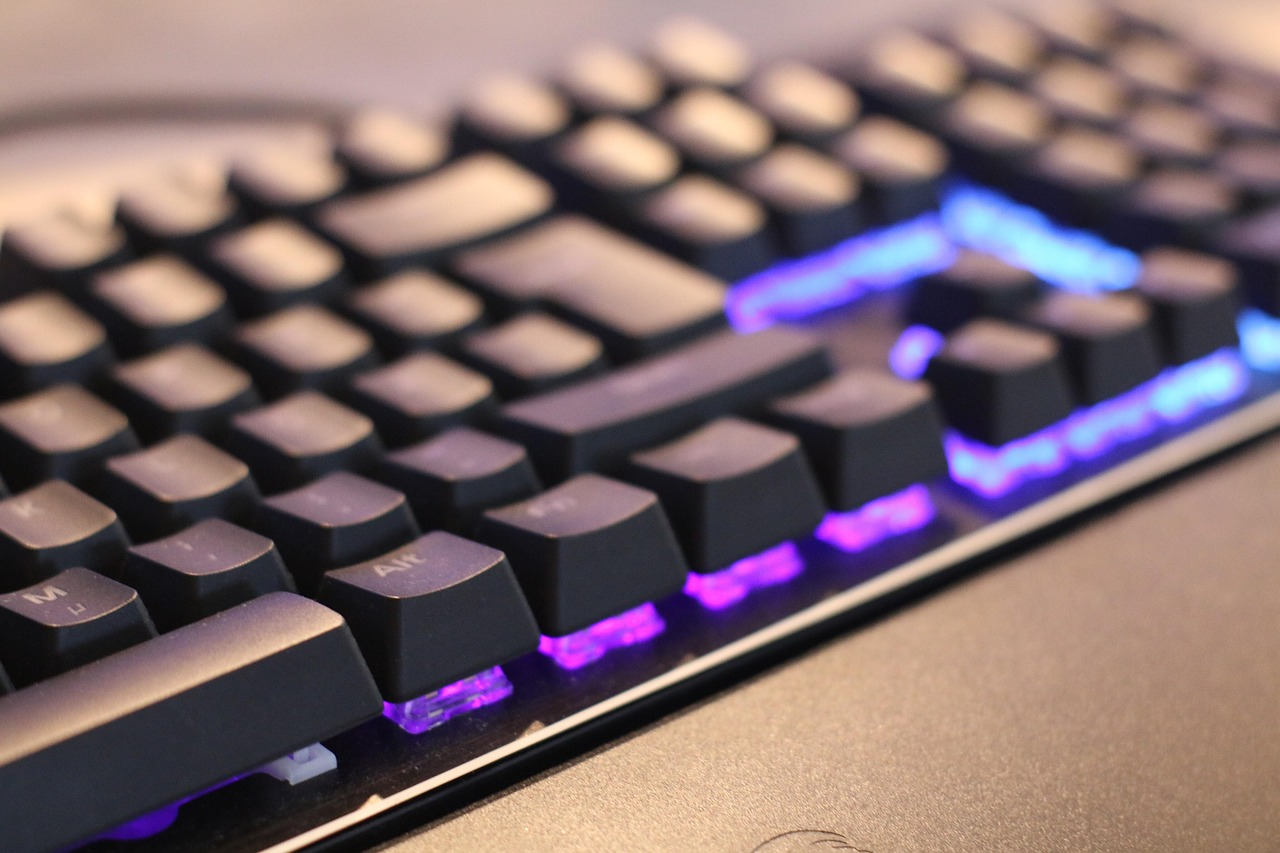Keyboards are essential tools for both work and play, but when they start acting up, it can be incredibly frustrating. Whether you’re dealing with unresponsive keys, sticky buttons, or erratic behavior, this guide will help you diagnose and fix common keyboard issues.

Common Keyboard Problems and How to Fix Them
1. Unresponsive Keys
Symptoms:
- Certain keys don’t register when pressed.
- Keys sometimes work and sometimes don’t.
Causes:
- Dirt and debris underneath the keys.
- Worn-out key switches.
- Software or driver issues.
Solutions:
- Cleaning: Turn off your keyboard and gently remove the affected keycaps using a keycap puller. Use compressed air to blow out any dust and debris. You can also use a small brush to clean around the switches.
- Software Check: Ensure your keyboard drivers are up to date. A lot of keyboards have management apps that autodetect and install drivers for you. In the event this is not the case, you can likely find the drivers for your keyboard on the manufactures website.
- Test: Use our Keyboard Tester to check if the issue persists after cleaning. If the key still doesn’t register, it might be a hardware issue.
2. Sticky or Repeating Keys
Symptoms:
- Keys feel sticky or don’t spring back up immediately.
- Keys repeat themselves when pressed once.
Causes:
- Spilled liquid, food, or pet hair can causing keys to stick.
- Faulty key switches.
Solutions:
- Cleaning: For sticky keys, gently remove the keycaps and clean the area with a cloth dampened with isopropyl alcohol. Make sure the keyboard is completely dry before using it again.
- Replace Switches: If cleaning doesn’t help, the switch might be damaged. Depending on your keyboard type (mechanical or membrane), you may need to replace the switches.
- Test: After cleaning or replacing switches, use our Keyboard Tester to ensure the keys are functioning properly.
3. Erratic Behavior or Multiple Key Presses
Symptoms:
- Random characters appear on screen.
- Multiple keys register when only one is pressed.
Causes:
- Software conflicts.
- Hardware faults.
Solutions:
- Software Reset: Restart your computer and check if the problem persists. Sometimes, a simple reboot can fix software glitches.
- Check Connections: Ensure your keyboard is properly connected. Try using a different USB port or wireless receiver.
- Driver Update: Update your keyboard driver and any related software. Most drivers will be packaged with the software for the keyboard but can also be downloaded from the manufatures website.
- Test: Use our Keyboard Tester to see if the problem is resolved. If not, the issue may be with the keyboard’s internal circuitry.
4. Ghosting and Non-Registering Multiple Key Presses
Symptoms:
- Certain key combinations do not register.
- Unexpected characters appear when pressing multiple keys simultaneously.
Causes:
- Keyboard hardware limitations (ghosting).
- Anti-ghosting feature not working properly.
Solutions:
- Keyboard Upgrade: If your keyboard lacks anti-ghosting, consider upgrading to a keyboard that supports n-key rollover (NKRO), which allows multiple key presses to register accurately.
- Test: Use our Keyboard Tester to test different key combinations and ensure they register correctly. This will help you identify if your current keyboard supports the features you need.
Additional Tips for Maintaining Your Keyboard
1. Regular Cleaning
To keep your keyboard in top condition, clean it regularly. Dust, crumbs, and other debris can accumulate over time, causing keys to stick or become unresponsive. Use compressed air, a small brush, and isopropyl alcohol to keep your keyboard clean.
2. Proper Handling
Avoid eating or drinking near your keyboard to prevent spills and crumbs from getting into the keys. If you need to move your keyboard, handle it gently to avoid damaging the keys or switches.
3. Using Keyboard Covers
Consider using a keyboard cover to protect your keyboard from dust, spills, and other contaminants. Keyboard covers are especially useful for mechanical keyboards, where debris can easily get trapped between the keys.
4. Regular Software Updates
Keep your keyboard’s firmware and drivers up to date. Manufacturers often release updates that improve performance, fix bugs, and add new features. Regular updates ensure your keyboard functions optimally.
5. Checking for Wear and Tear
Regularly inspect your keyboard for signs of wear and tear. Keycaps can wear out over time, especially if you type a lot. Consider replacing worn-out keycaps to maintain a comfortable typing experience.
When to Replace Your Keyboard
Despite your best efforts, there may come a time when your keyboard is beyond repair. Here are some signs that it might be time for a new keyboard:
- Frequent Malfunctions: If your keyboard regularly malfunctions or if multiple keys are unresponsive, it might be time for a replacement.
- Physical Damage: Cracked or broken keycaps, damaged switches, or a non-functioning backlight are signs that your keyboard needs replacing. This can also just be a good excuse to perform a much needed upgrade on your keyboard given the main board is not damaged.
- Outdated Technology: If your keyboard lacks modern features such as n-key rollover, anti-ghosting, or customizable keys, consider upgrading to a newer model.

Conclusion
By following this guide, you can effectively troubleshoot and fix common keyboard issues, ensuring your device functions smoothly. Regular maintenance and testing with our Keyboard Tester can help you keep your keyboard in top condition, whether you’re typing up reports or dominating in your favorite games. Remember, a well-maintained keyboard not only enhances your productivity but also prolongs the lifespan of your device.
Stay tuned for more tips and guides on maintaining your input devices!
Happy Typing!